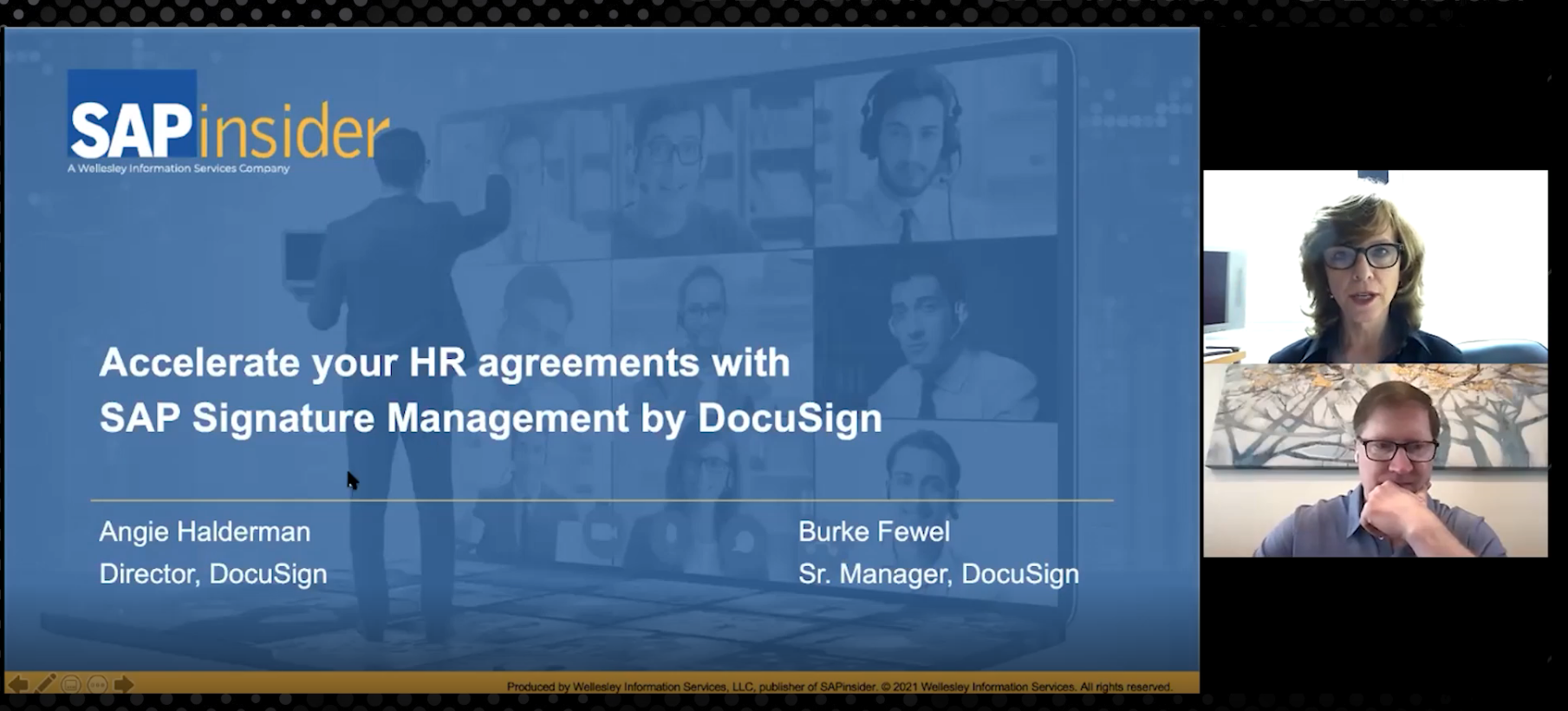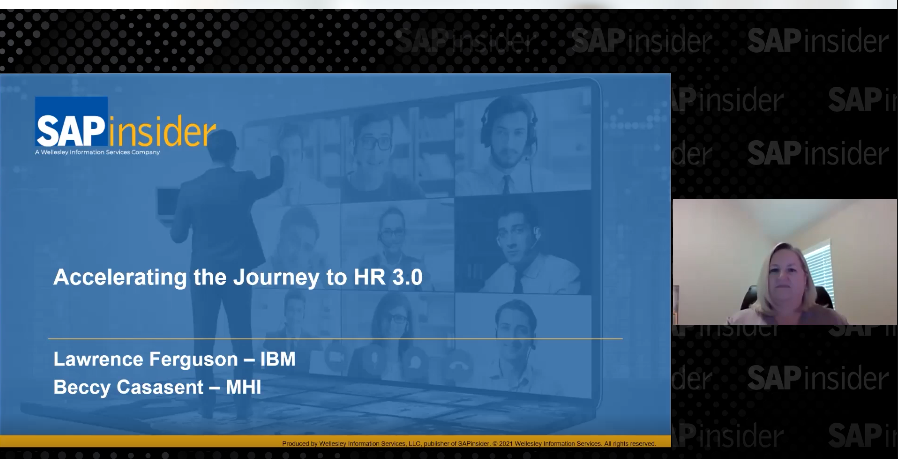The Evolution of HR
From a Reactive Role to a Strategic and Predictive Business Partner
Q: How has the role of HR evolved over the past two decades?
The actual definition of HR has changed over the years. There has been a complete mindset shift that’s not necessarily about the HR technology behind the scenes, but rather the way that HR approaches working with employees. In the old days, HR wasn’t seen as a strategic partner and didn’t have a seat at the executive table, so to speak.
Over time, the nomenclature of HR has evolved to be called human capital management (HCM), which is an approach that perceives employees as assets — or human capital — whose current value can be measured and whose future value can be enhanced through investments like any other asset in the business. To me, that’s the biggest change because the single largest investment most companies make (approximately 70% of their operating costs) is for their employees alone. Having the detailed information and analytics at your fingertips to be in the best position to acquire, train, and retain employees is the key. The ability to find the talent the organization needs and determine the cost and complexity of developing skills and leadership from within are the most critical concerns driving HCM efforts in the coming year.
Q: How are companies working new technologies into their business plans to adapt to this shift?
In the old days, HR software was simply about basic employee tracking — benefits, time, and payroll. The conceptual shift to HCM has triggered an evolution toward talent-based technology. What used to be centered on traditional processes, like tracking how much employees are paid or how much time they have entered, has now evolved into complete employee lifecycle processes that track efforts to recruit, retain, develop, and reward people. Talent has become the centerpiece of HCM, and a talent management strategy that drives the business strategy makes sense. So, to summarize, the primary shift has been moving from the core HR data elements to more talent-based solutions.
Another big shift for companies has been around how they perform HR reporting. Traditional or old-school HR reporting used to almost exclusively measure transactional or operational data — such as when employees clocked in or how many employees were in a certain department. This is information that is critical to the business but is not necessarily very strategic. Newer technologies, such as SAP SuccessFactors Workforce Analytics, allow companies to plan for their future workforce, and this represents a mindset shift for professionals in the field. This solution includes projections and analytics that allow an organization to take action today to plan for tomorrow, and this is not something HR traditionally did. Instead of focusing on how much employees are paid today, technology is allowing HR to predict how much the workforce will cost the organization in five years. For example, with SAP SuccessFactors Workforce Analytics and SAP SuccessFactors Workforce Planning, you can predict how many employees may potentially retire in the next five years and then analyze the profiles, strengths, and skills of the current employees to see if you have enough people to replace them should they leave. That functionality, coupled with other solutions like SAP SuccessFactors Learning, can place those employees on an educational path to get them where they need to be. It’s quite a shift to move from caring about if employees were paid correctly to planning for the future sustainability of the organization.
The reason why HR reporting and analytics is so important is how it’s used to plan for the organization. A company can’t grow unless there are people available and ready to fill the seats for the future business. Having workforce analytics allows businesses to predict what is going to happen with the workforce and plan accordingly so they can get people skilled up and so they can plan for the future. It’s a strategic shift from handling things today (a reactive mindset) to preparing for the future (a proactive approach).
Right now, companies are planning for their eventual migration to a cloud strategy from a technology and landscape perspective, but that’s a journey people will be taking for the next several years.
Q: Where do you think companies are in adopting these HCM technologies?
Right now, companies are planning for their eventual migration to a cloud strategy from a technology and landscape perspective, but that’s a journey people will be taking for the next several years. SAP customers have until the year 2025 before SAP plans to discontinue support of on-premise SAP ERP Human Capital Management (SAP ERP HCM). People will definitely be moving to the cloud and to SAP SuccessFactors solutions, but it will be a gradual move. There’s an adjustment when shifting to this new technology that inevitably comes with the use of a cloud solution. Migrating to the cloud requires a shift from a completely customer-driven (and often heavily customized) system to a standardized, best-practice-designed environment like the one provided by SAP SuccessFactors solutions. Another area of change is the empowerment of managers to take on a more active role in their employee life cycles. Instead of the HR department processing everything for employees, in the new land of SAP SuccessFactors solutions, managers are now initiating many of these actions and managing their employees themselves via their PCs or mobile devices — and that’s a big change management area.
Q: What would you say is the secret to success for an HCM strategy?
This has varied over the years, but currently, it seems that a successful HCM strategy includes integration and innovation. In the past, a lot of companies deployed various solutions (SAP functionality for HR and payroll plus other vendors’ solutions for talent software) and used numerous systems to try to successfully process their employee capital. Now, a more popular approach is to seek integrated technologies. An integrated approach creates a foundation so that each of the systems can talk to each other or, ideally, exist all on one platform, like SAP SuccessFactors solutions. People need to stop thinking about HCM as piecemeal — buying a recruitment system and then buying a learning system — and start thinking about it from a holistic perspective for the employees’ entire “hire to retire” life cycle. Lay out a strategy from a technology perspective, including the landscape, so all systems can be embedded together to make sure that it’s successful.
Another piece of advice for success would be to continually adapt to change. For a long time, SAP professionals didn’t have to do much in terms of continuing education (from a technology perspective) because not a lot changed for HR in the SAP world over the past 20 years. However, with the advent of SAP SuccessFactors solutions, so much has changed in the HCM space. My advice is to embrace SAP SuccessFactors solutions and do what you can to stay in the know on the changing technology because it is the future. SAP provides training for people to get up to speed on the latest technologies, but that training just covers how to use the software (https://open.sap.com/). I recommend that people take advantage of the conferences offered by SAPinsider or the publications and other resources they produce because that is knowledge passed on by customers who have actually done the work.
It’s one thing to take a course learning the steps to configure SAP SuccessFactors Employee Central, but what’s even more valuable is attending a conference or seminar where you can talk to people who implemented the solution and learn about the challenges they faced and how they fixed those problems. It’s that networking aspect you experience when connecting with other people who are in the same boat as you that, to me, is the biggest advantage those types of events and resources offer.
Q: Where do you see the future of HR?
If I had to pick one thing, I would say it is predictive analytics and the use of tools like SAP SuccessFactors Workforce Analytics and SAP SuccessFactors Workforce Planning that allow organizations to do that future-driven planning. Instead of looking at just what’s going on in the business today, predictive analytics allow organizations to plan for sustainability tomorrow.
This allows organizations to change from being reactive to proactive. For example, you can create a report and see that there were 10 people who were terminated from the company within the month. If you start moving toward predictive analytics, you can capture and analyze more information — such as the reason they were terminated and what manager they were under — to identify trends and patterns. You can see that most people who work for Manager A in one region quit the organization as opposed to those who work for Manager B in another. Therefore, possibly taking an action — such as identifying the gap areas for Manager A and ensuring future managers are trained in those areas — would reduce that number. Trying to figure out why there is a problem and creating that plan of action is being strategic about it and not just reacting to the fact that a number of people were terminated.
Having workforce analytics allows businesses to predict what’s going to happen with the workforce and plan accordingly so they can get people skilled up and so they can plan for the future.
Q: What key takeaway would you offer those just starting on their SAP SuccessFactors journey?
The important takeaway is that there are a myriad of different components in this future landscape. Instead of just SAP ERP HCM, SAP customers now also have the suite of SAP SuccessFactors solutions to consider. The one piece of guidance I would give is that you don’t have to put them all in at once. There’s no reason for you to throw out your entire SAP system and move to an SAP SuccessFactors implementation. That’s not something that’s recommended. Even SAP may deter you from that strategy. Rather, they advise customers to follow a “start anywhere, go everywhere” methodology, which means start with a pain point (you need a recruiting solution, for example), investigate how it works and embeds into the other components, and go one step at a time.
That’s one piece of advice I give all customers: look at each individual need to identify pain points. If recruiting is a pain point, start with SAP SuccessFactors Recruiting. That will lead you into thinking about SAP SuccessFactors Employee Central and SAP SuccessFactors Performance & Goals, and it goes from there. However, keep in mind that even if you are doing it one step at a time, you still need to plan from a strategic perspective for how the technology is going to work behind the scenes. You don’t just go ahead and rip everything out and throw it all in.










